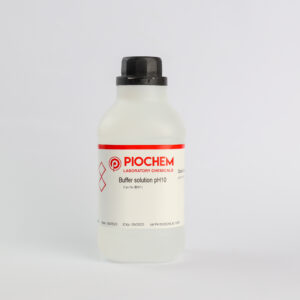Millon’s reagent is an analytical reagent used to detect the presence of tyrosine, the only amino acid containing a phenol group. It is prepared by dissolving mercuric nitrate in nitric acid and diluting with water. The reagent is a clear, colorless solution that turns yellow when heated.
In the Millon’s test, a few drops of the reagent are added to the test solution, which is then heated gently. If tyrosine is present, the reagent will react with the phenol group to form a red-colored precipitate or solution. The color of the precipitate can vary from pink to brick red, depending on the concentration of tyrosine in the solution.
Millon’s test is not specific for tyrosine; it can also give a positive test for other compounds containing the phenol functional group, such as phenol, cresol, and resorcinol. Therefore, the biuret test or the ninhydrin reaction are often used along with Millon’s test to confirm the presence of proteins.
Here is the procedure for the Millon’s test:
- Add 1 mL of the test solution to a test tube.
- Add 1 mL of Millon’s reagent to the test tube.
- Gently heat the test tube until the solution boils.
- If tyrosine is present, a red-colored precipitate or solution will form.
Millon’s reagent is a relatively safe reagent to use, but it is important to wear gloves and eye protection when handling it. The reagent can cause skin and eye irritation if it is not handled properly.
Here are some other things to know about Millon’s reagent:
- It is a sensitive reagent and can detect tyrosine in very low concentrations.
- It is a specific reagent for tyrosine, but it is not as specific as the biuret test or the ninhydrin reaction.
- It is a relatively unstable reagent and should be prepared fresh each time it is used.
- It can be stored in a cool, dark place for up to 6 months.
I hope this helps! Let me know if you have any other questions.





Reviews
There are no reviews yet.